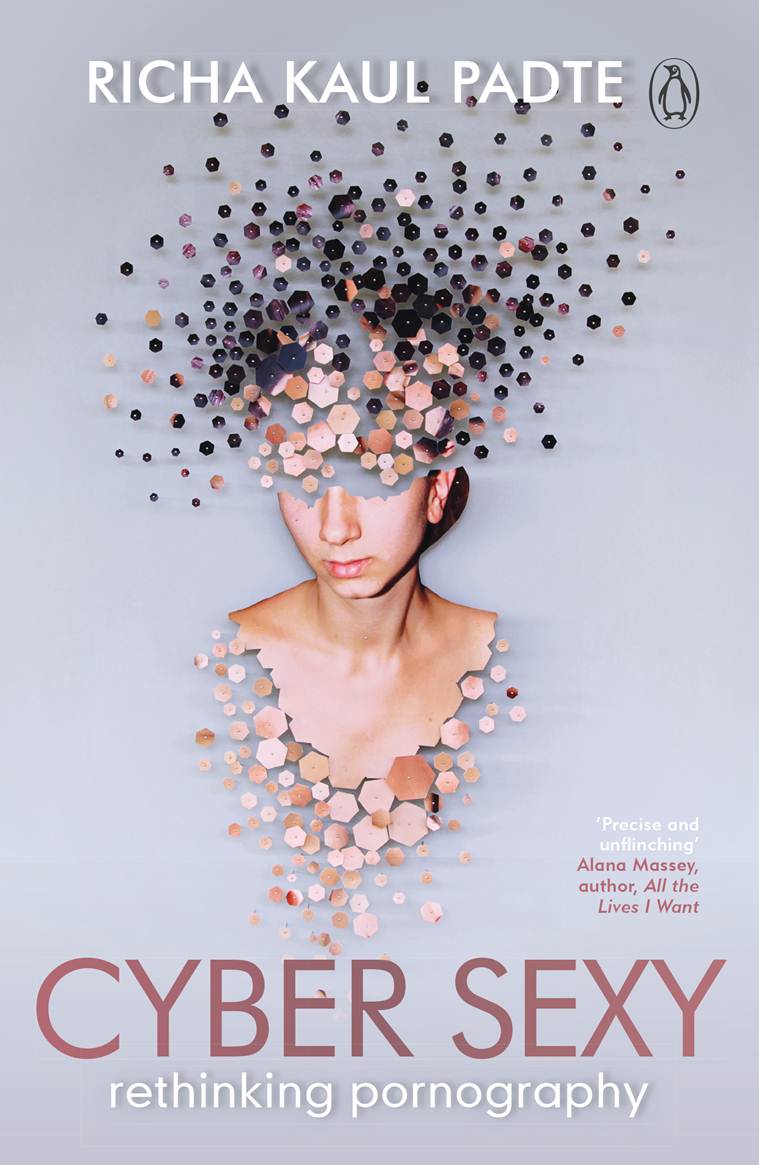 Whose gaze is it anyway: Richa Kaul Padte’s book is an ambitious exploration of pornography and how women engage with it in India.
Whose gaze is it anyway: Richa Kaul Padte’s book is an ambitious exploration of pornography and how women engage with it in India.
India is the third-highest consumer of pornography worldwide in terms of traffic, says Pornhub’s 2017 Year in Review report. More importantly, female visitors to the website increased the most in India — by 129 per cent. Yet, porn and Indian women are believed to be worlds apart. Writer-editor Richa Kaul Padte’s debut book, Cyber Sexy, examines internet sexuality, the genesis of pornography and tricky questions around consent. In this interview, the Goa-based writer speaks about women, choice and the myth of internalised patriarchy. Excerpts:
Can you give us an idea of the kind of surveys that you had to do for this book?
I did two surveys. One was to figure out how people learned about sex, and I got around 500 responses. The other was for the chapter, ‘Women and Porn’, to learn more about South Asian women’s experiences of porn. I got around 200 responses for that one. The rest of Cyber Sexy was researched through in-depth interviews; I’m not sure how many people I interviewed in total, but I think I finally included 40 of those stories.
Do you feel you managed to capture the voices of people from different classes sufficiently? The online spaces you often speak of are not accessible to everyone.
I think it’s important to remember that internet access itself is deeply unequal. I’ve cited a report which estimates that in 2016, only 35 per cent of India’s population had internet access. And by that, they’re measuring if someone has ever accessed the internet. So, forget accessing spaces like Second Life and Chaturbate, which need high-speed reliable internet connections, most people in India don’t have any internet connection.
That said, my interviewees do all come from lower middle-class and up backgrounds, and they’re also all English-speaking. I’m not fluent in any other language, and these weren’t the types of interviews I wanted to outsource. So, there’s definitely a class bias in my book, and I think that comes from two places — the huge class bias of the internet itself, as well as my own language limitations.
You look at cinemas which screen “blue films” as labs that, as author Samuel Delany argues, cross “…class, racial, sexual and economic boundaries…” But are these spaces so diverse?
Most people who visit porn theatres in India are from economically disadvantaged classes and are almost exclusively men.…There is often not much class difference between those who visit these cinema halls, but what we do see is a disregarding of certain sexual boundaries. For example, these are mostly men who don’t necessarily think of themselves as gay, who may not have the terminology of the queer movement, but who are visiting these theatres to have sexy times with other men. In a country that criminalises same sex relations, no less. Also, these men may be from the same class, but from the same caste — especially in urban centres. In that way, I do think that these theatres are, as Delany says, laboratories for sexual experimentation and a certain type of freedom from the boundaries that people are forced to live within.
 The book cover of Cyber Sexy.
The book cover of Cyber Sexy.
Your write on how science has been used to rationalise why female desires aren’t normal. Have you come across research that also attempts such correlation between pornography and women?
I haven’t, but I think the same science that sees women with desires as ‘oversexed’ would be more than happy to weigh in on porn too. There is a long history of suppressing women’s sexual desires, and Western science and medicine have been key players in making this happen. From pathologising female sexual arousal to diagnosing women as nymphomaniacs to treating “hysteria” by getting a physician to forcibly bring a woman to orgasm to “calm her down”— morality-based science has had its paws all over women’s sexuality for a long time.
Consent is crucial in the discussion around porn, and you argue that as long as women say yes, the agency lies with them. But consent, like most things, can’t be absolute. How does one, then, realistically navigate the internet (which “doesn’t forget”) with respect to production of pornography?
My larger argument is precisely what you ask at the end of your question — how do you guarantee consent when so much about consent itself is uncertain and, in the case of online consent, happening within the context of a corporate-controlled internet? I wish there was a convenient checklist I could provide for how to achieve this, but the truth is that what we’re talking about is dismantling the very systems of inequality and power that produce consent violations in the first place. While these power structures persist, we will not see an end to consent violations.
You’ve said the male gaze theory ignores how women exercise choice. What do you think of internalised patriarchy?
Patriarchy is one of the key structures of power through which the entire world is organised. I’d argue that along with capitalism, it has in fact been the main system of power distribution in the world, for centuries. Which means that everyone living under patriarchy or capitalism has internalised it, because no one is superhuman. I mean I truly detest capitalism, but show me a pair of Nike high tops and watch my hatred temporarily go out the window. My point is, we are all making choices from within oppressive power structures, not from outside. I hate when women who make certain choices — especially sexual — are accused of internalised patriarchy, because show me someone of any gender who has not internalised patriarchy and I will…worship at the altar of their untainted being.